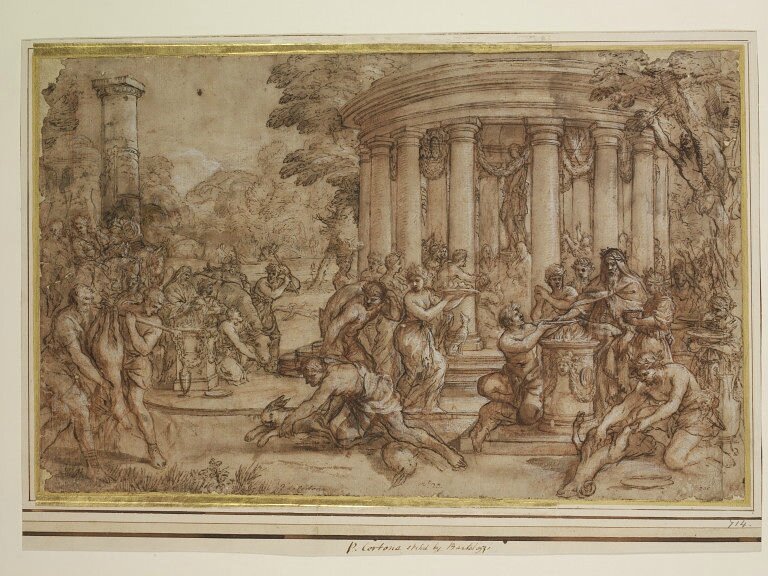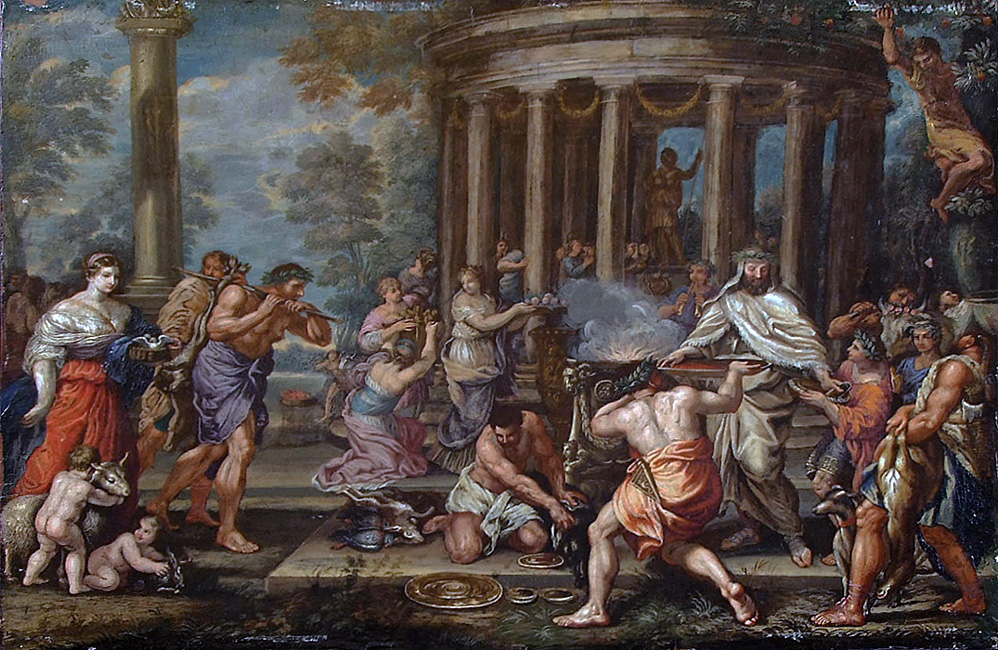|
Provenance:
Private Collection, Paris (France)
Condition report:
Good condition, with some flaking (see picture) and slight surface cracks due to the age of the painting. Examination under ultraviolet showed slight overpainting
(goat's udders).
Exhibited:
Pietro da Cortona per i Barberini, Palazzo Vecchio, Rome
(October 1997 - February 1998)
Literature:
Catalogue of the exhibition mentioned above, no. 60 p. 82
Notes (by Emma Chiswell):
This work is related to a painting owned by the Barberini collection in Rome before 1934, which has been lost since the Second World War. This painting was reproduced in an engraving by Pietro Dell Aquilla, which was used as a model for copies reversing the composition.
Pietro da Cortona was commissioned to paint his Xenophon's Sacrifice to
Diana by Cardinal Francesco Barberini (1597-1679), the eldest nephew of
Pope Urban VIII Barberini. It was engraved by Pietro Aquila in 1653 and
published with the description: Xenophon's Sacrifice to Diana after the
Hunt. The painting has, however, often been described generically as A
Sacrifice to Diana, including in inventories of the Barberini
collection. Elhafen's relief is almost certainly taken from Aquila's
print, since it similarly shows the composition in reverse to the
original. The scene shows a heavily draped priest (ostensibly Xenophon)
crowned in laurels and encircled by attendants, making a sacrifice to
the goddess Diana, an effigy of whom stands within a circular
shallow-domed temple in the background. To the left there is a column
surmounted with spolia, partly obscured by devotees of the goddess who
bring offerings to the priest. In the distance, flames rising from a
brazier, to which a sacrificial bull is led.
Pietro da Cortona probably executed the painting circa 1631, as
research in 1970 uncovered a payment in that year for a frame
for the masterpiece. Prior to the discovery of the payment for
the frame in 1631, it had been suggested that the work was
commissioned specifically to commemorate the 1653 marriage of
Maffeo Barberini (Cardinal Francesco Barberini's nephew) to
Olympia Pamphilj Giustiniani. Just as Xenophon had returned to a
Greece from exile in Asia, the new marriage alliance ended the
feud between the Pamphilj and the Barberini, the latter having
been driven into exile in France by Pope Innocent X Pamphilj in
the 1640's. This theory was discounted following the frame
discovery, though it may explain the timing of the publication
of Aquila's print. Sadly, the painting was acquired from the
Barberini by Hans Posse in 1941 for Adolf Hitler's Führermuseum
in Linz and never seen again, presumably destroyed during the
Second World War. A preparatory drawing survives in the Victoria
and Albert Museum, London (inv. no. DYCE.200).

Da Cortona, Pietro; Roman sacrifice (to Diana?); A priest slaying a
bull; and a second sacrifice of a goat, before the Temple of Mars; Pen
and bistre, washed and heightened with white; Signed; Italian;
1615-1669. Victoria and Albert Museum, London (inv. no. DYCE.200) ©
Victoria and Albert Museum, London 2016.

Painting currently on loan for exhibition
|
